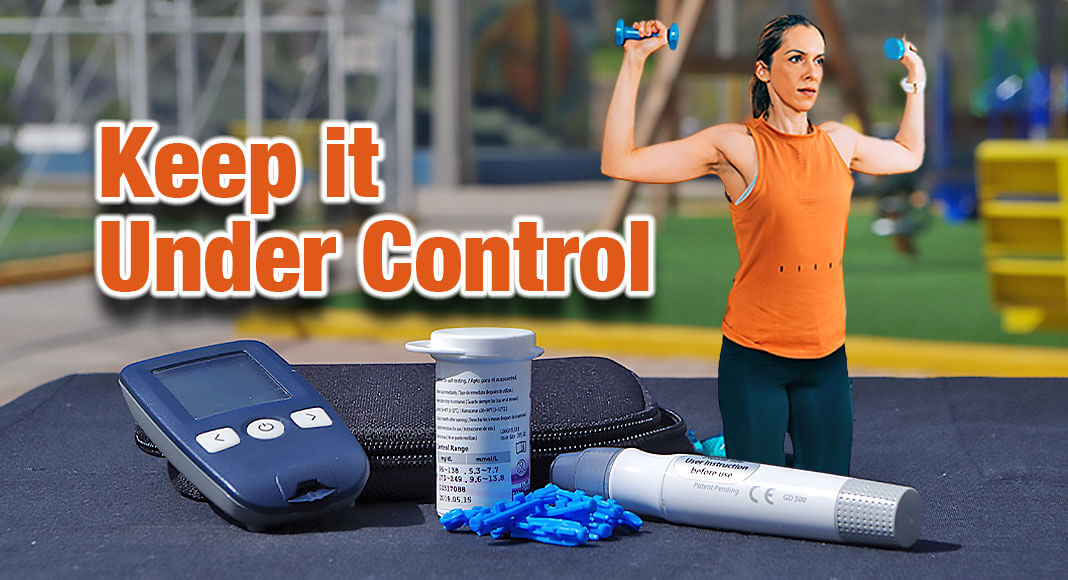
Mega Doctor News
Newswise — BOSTON – Exercise carries a long list of benefits for everyone. For people with metabolic diseases like pre-diabetes, type 1 diabetes and type 2 diabetes, physical activity can help keep blood sugar levels in check and stave off diabetes-related nerve damage and heart disease. However, people with diabetes have lower aerobic exercise capacity than people without metabolic disease – that is, their bodies don’t burn oxygen as efficiently and may also be resistant to improving exercise capacity with training.
In a new study, scientists in the Research Division at Joslin Diabetes Center sought to determine whether high blood glucose blunts the body’s response to exercise and whether lowering it can restore the ability to improve aerobic capacity with training. The team’s findings, published in the journal Diabetes, suggest that a combination of a glucose-lowering medication and exercise may work to improve exercise capacity in people with high blood sugar, or hyperglycemia.
“As the prevalence of metabolic disease skyrockets, low exercise capacity associated with high blood glucose has the potential to impact a large and growing proportion of the population,” said Sarah J. Lessard, PhD, an assistant investigator in the section of Clinical, Behavioral and Outcomes Research at the Joslin Diabetes Center, and instructor of medicine at Harvard Medical School. “Determining why some individuals’ bodies resist increase exercise capacity even with training will help us to design strategies to improve health and longevity in this population.”
In this two-part study, Lessard and colleagues first tested a drug called canagliflozin which can reduce blood glucose in a mouse model. Mice with induced hyperglycemia were monitored as they voluntarily ran on exercise wheels over the course of the six-week study. When the scientists assessed the animals’ response to exercise training, they found marked improvement among those that had been given canagliflozin compared to those that had not been given the drug.
Analyzing the animals’ muscle tissue, the researchers were also able to identify specific molecules in skeletal muscles responsible for low exercise capacity in the context of high blood glucose.
Next, using small samples of muscle taken from human study participants before and after exercise sessions, the researchers were able to confirm that the molecules identified in the pre-clinical experiments may also be relevant in people.
“We find that having high blood sugar for long periods of time changes the way muscles respond to exercise at the molecular level,” Lessard said. “The good news is, we find that reducing blood glucose levels in mice with diabetes using the medication canagliflozin can prevent the impairments that blunt improvements to exercise capacity that occur with high blood glucose.”
As a next step, Lessard and colleagues plan to test whether other glucose-lowering treatments – such as dietary strategies – can be as effective as drug therapies in improving exercise response. They are also further studying the molecular signaling events in muscle that lead to impaired remodeling and poor exercise response.
“If we can gain a better understanding of how high blood sugar leads to these changes in muscle, we can develop targeted therapies to restore the exercise response,” Lessard said.
Co-authors included Tara L. McDonald, Pattarawan Pattamprapanon, Eileen M. Cooney, Roberto C. Nava, Joanna Mitri and Samar Hafida of Joslin Diabetes Center.
This work was supported by the National Institute of Diabetes and Digestive and Kidney Diseases (R01 DK 124258); a Pilot and Feasibility award; and Diabetes Research Center core facilities funded by NIH award number P30 DK036836; a postdoctoral fellowship from the American Heart Association (19POST34381036); a Mary K. Iacocca Senior Visiting Fellowship; and a fellowship from Joslin Diabetes Center NIH training grant (T32 DK 007260). For human studies, the authors acknowledge support from the Joslin Clinical Research Center and thank its philanthropic donors.
The authors declare no conflicts of interest.











